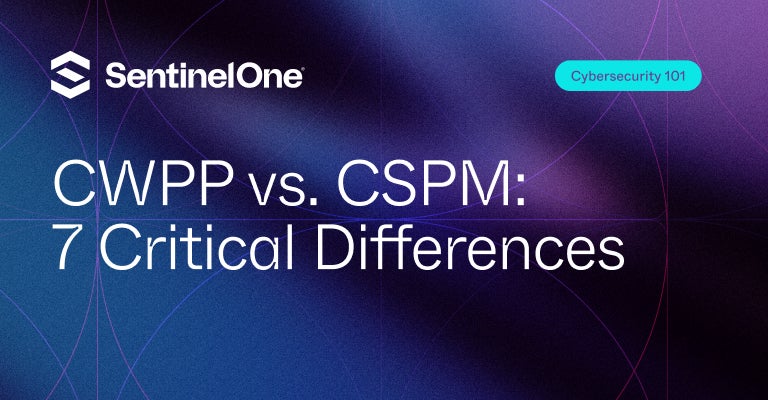The “cloud security” subset of cyber security safeguards the cloud computing infrastructure. Maintaining data security and privacy across web-based platforms, infrastructure, and apps is particularly important. Cloud service providers and customers, whether individuals, small and medium-sized businesses, or enterprises, must work together to secure these systems.
Cloud service providers always use internet connections to host services on their servers. Using cloud security solutions, customer data is kept private and secure because the company’s success depends on consumer confidence. Nevertheless, the client has some of the responsibility for cloud security. Both must be thoroughly understood in order to create a successful cloud security solution.

This article will discuss Cloud workload protection programs, Cloud Security Posture Management, and the Differences Between CWPP and CSPM (CWPP vs CSPM).
What is CWPP?
A cloud workload protection platform (CWPP) is a security solution created to secure cloud workloads in modern cloud and data center settings. For serverless workloads, virtual machines, containers, and physical machines everywhere, a powerful CWPP can offer standard security controls and visibility. When deployed workloads, CWPPs perform a vulnerability check before securing them with host-based intrusion prevention, identity-based micro-segmentation, optional anti-malware, and other measures.
Characteristics of CWPP:
- The ability to find vulnerabilities sooner in the process
- Exploit and live threat detection
- enhanced investigation and context capabilities for incident resolution
Use case scenarios for CWPP:
- Workload discovery and inventory across various environments
- System integrity assurance and whitelisting of applications in virtual machines
- Workload behavior monitoring and threat detection and prevention tools
- Protection for containers and Kubernetes
- serverless protection
What is CSPM?
In order to discover misconfiguration issues and compliance risks in the cloud, IT security technologies have created a market niche called cloud security posture management (CSPM). Inconsistencies in implementing security policies are checked continuously on cloud infrastructure with the help of CSPM.
By automating visibility, continuous monitoring, threat detection, and remediation workflows, cloud security posture management (CSPM) identifies and eliminates risk by looking for misconfigurations across a variety of cloud environments and architectures, such as:
IaaS (Infrastructure as a Service), SaaS (Software as a Service), and PaaS (Platform as a Service) are just a few of the services that CSPM may provide for you. Aside from handling incident responses, recommending remediation, monitoring compliance, and integrating DevOps into hybrid and multi-cloud platforms and infrastructures, CSPM technologies also do several other tasks. Before a breach occurs, specific CSPM solutions assist security teams in proactively identifying weak points in cloud systems and correcting them.
Characteristics of CSPM:
- Find your Oracle, AWS, Azure, GCP, and other accounts in a single window.
- Allocation of resources and cost control
- Cloud migrations, backup, and recovery
- Effective management of the continuing migration to cloud infrastructure
- Compliance with a range of requirements, such as CIS, NIST, HIPPA, etc., as well as security problems caused by misconfiguration problems
Use cases for CSPM:
- Constant monitoring and application of security measures across many cloud environments
- Discovering and identifying cloud workloads and services
- Prioritization of threat detection and notifications
- Prioritization, visualization, and risk management in cloud settings
- Monitoring ongoing compliance with regional and industry-specific rules
Difference between CWPP and CSPM
CSPM and CWPP systems have many characteristics, but their main distinction is scope.
The goal of CSPM is to provide recommendations for remediation and automation while providing visibility into the security of cloud infrastructure and applications. By comparing cloud resources to security best practices, CSPM solutions ensure that data is protected and that access to sensitive resources is restricted.
The security of application and service workloads operating in cloud environments is prioritized by CWPP, which provides malware protection, manages access controls, and keeps an eye out for unusual behavior. CWPP technologies, like CSPM, can assist enterprises in meeting regulatory requirements for workloads running in the cloud and prove compliance.
CSPM concentrates on making sure that the cloud environment is configured securely. In contrast, CWPP concentrates on safeguarding the workloads executed in that environment, despite the two being identical in many aspects.
CWPP vs CSPM: Key Differences
Take a look at the critical points in CWPP vs CSPM.
| Parameters | CWPP | CSPM |
|---|---|---|
| Definition | A host-centric solution that focuses on the specific needs of server workload protection in hybrid data centers | Solution for evaluating the cloud environment against best practices and security violations and offering the necessary remedial actions, frequently through automation |
| Visibility | Keeping track of workloads and discovery | Continuous monitoring and application of security measures across many cloud deployments |
| Data Protection | Applications whitelisting and integrity assurance | Finding and locating cloud workloads and services |
| Threat Protection | Monitoring workload behavior and spotting threats | Prioritizing alerts and identifying threats |
| Policies | Protection for containers and Kubernetes | Risk prioritizing, risk visualization, and management on the cloud |
| Data Sovereignty | Provides serverless defense | Monitoring of ongoing compliance with industry- and region-specific requirements, such as GDPR and FISMA |
| Products | Sentinelone, Trend Micro Security, IaaS, Prisma Cloud, and Symantec | Sentinelone, Zscaler, Lacework, Amazon Web Services, and CloudPassage |
Conclusion
In this article, you have read about CWPP vs CSPM. Tools like CSPM and CWPP are crucial for safeguarding contemporary cloud settings. Despite some functional overlap, each solution has unique strengths and scopes, making them perfect partner technologies that should cooperate to offer a complete security solution. To explore more on the platform how it helps your business, Request a demo.